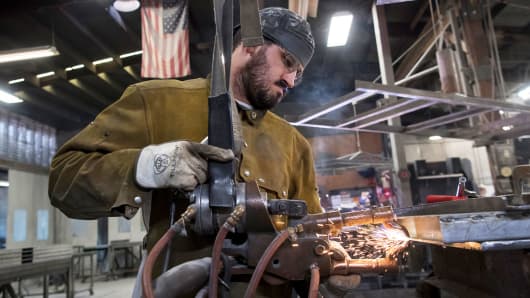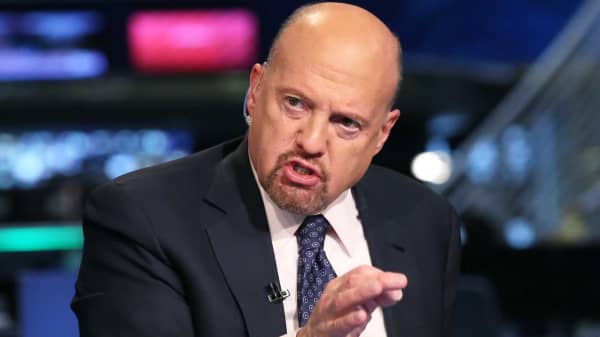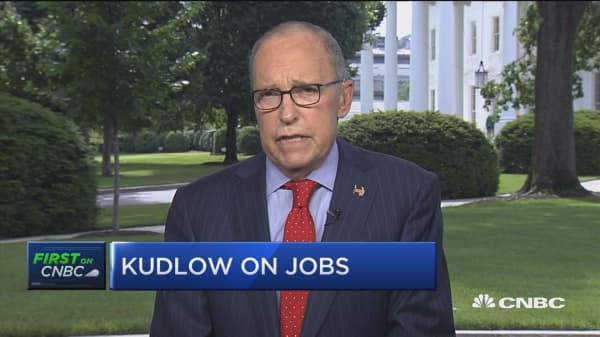The economy added roughly 223,000 net new jobs in May, pushing the jobless rate a tick lower to 3.8 percent, an 18-year low.
President Donald Trump was uncharacteristically silent on Twitter about Friday's strong jobs data, aside from a controversial early morning tweet seeming to predict strong growth ahead of the 8:30 a.m. release. But White House economic advisor Larry Kudlow offered an upbeat forecast.
"Business is coming alive," he told CNBC. "This could go on for a whole bunch more years, in my judgement."
Of course, the historic run of employment gains has been underway since the Great Recession ended, well before Republicans took control of Congress and Trump moved into the White House.
But with the U.S. economy now approaching its 10th year of recovery, the overall unemployment rate has fallen to levels rarely seen in the historical data. Last month, the official "headline" jobless rate fell to the lowest level since the end of the '90s Internet boom, which lasted a decade. The last time it was lower was in December 1969, at the tail end of a nearly nine-year boom that ended in 1970.
And the jobless rate may go lower still.
"The labor market is tightening rapidly and declines in the unemployment rate are likely to continue, but at a slower pace," Ben Herzon," an analyst IHS Markit, wrote in a research note.
That would make it harder for Democrats to argue that voters need a change in Washington, at least in terms of the most critical pocketbook issue.
Most troubling for Democrats is that the biggest job gainers have been groups that have historically suffered from stubbornly high levels of unemployment, including younger workers, black workers and so-called marginally attached workers, whose employment is tracked by the BLS with the so-called U-6 rate. That measure includes part-time workers who want a full-time job and people who want to work but have given up looking and aren't in the official count of the labor force.






